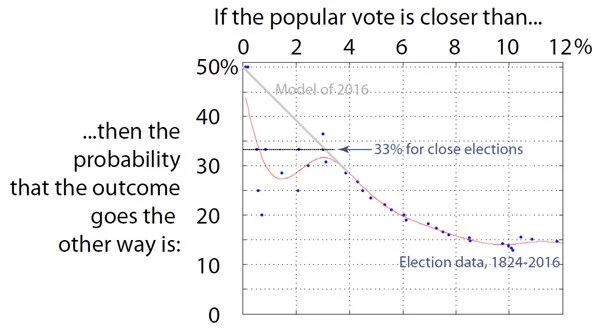Some defenders of the way we chose our president insist that a “wrong winner” election—when the person who gets the most votes does not become the president—is a “rare divergence” that is unlikely to happen again (despite the fact that it has happened in two out of the last five elections).
But according to our statistical analysis, the winner of the national popular vote will lose the Electoral College 32-40% of the time in close elections. And as Geoffrey Skelley at FiveThirtyEight has explained, the current trend of very close elections—within single-digits percentage points—is likely to continue. The closer the election, the more likely a split between the national popular vote and the Electoral College. In addition, in recent elections, there have been fewer swing states than in the past, and more states where the margin of victory was very large. The result: more and more elections where the winner of the national popular vote will lose the Electoral College.
Nor does the current system give a long-term advantage to either party. In modern elections, the Electoral College has appeared to be skewed against Democrats. But, as Democrats and Republicans agree, this trend won’t last forever. Swing states stop swinging, and safe states for one party shift to become safe states for the other. The next “wrong winner” could just as easily be a Democrat who wins the Electoral College and loses the national popular vote. In addition, as many, including Donald Trump, have rightly noted, no candidate has ever actually campaigned to win the national popular vote. There is no telling which party would have an advantage if they did.
But one thing remains certain: so long as we stick with our current system, candidates will exclusively campaign in the current crop of swing states. Most of America will be ignored, and their voices silenced.

